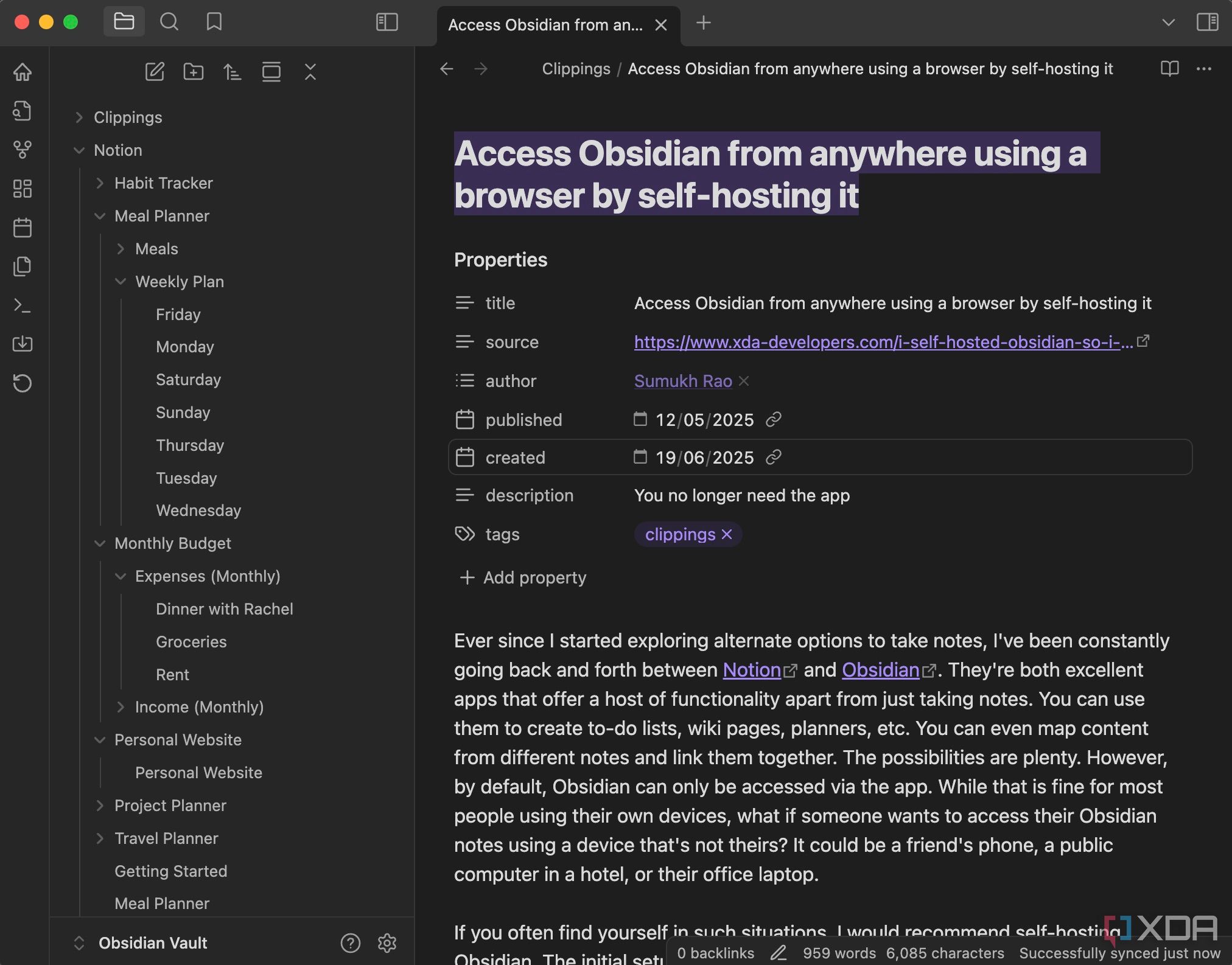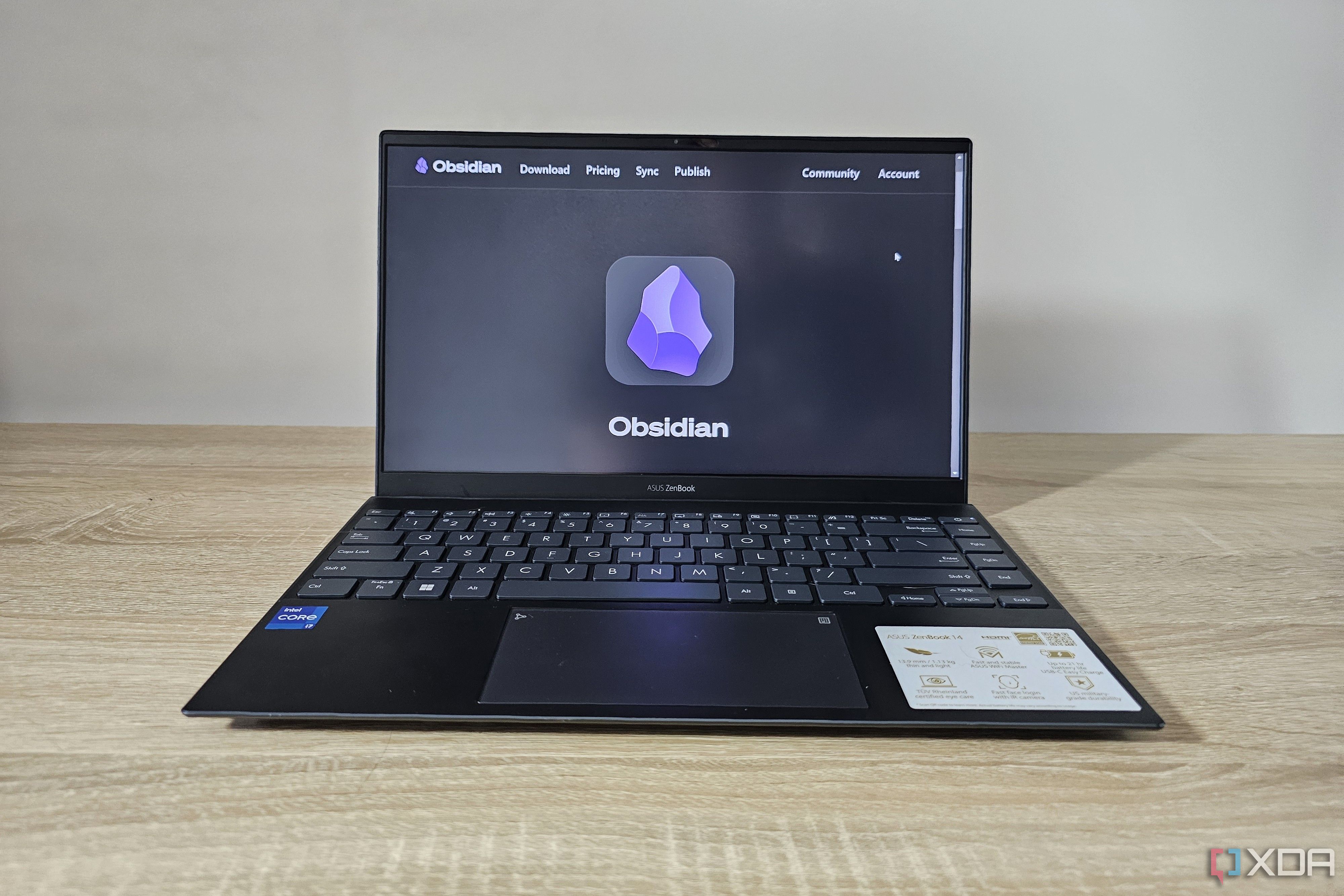I've been saving webpages offline ever since I started reading blogs. From setting up RSS feeds to read articles from multiple sources to using Pocket to save links I want to read later, I've done it all. This is exactly why I was quite bummed when Mozilla announced that it was shutting down Pocket. Sure, I found other alternatives like Karakeep to save my links and perform a lot more tasks, but it took away from the familiarity of using an app I was comfortable with for years. This also made me wonder if most people feel the same about new apps. So, I decided to look for ways to save webpages for widely used apps. Thankfully, it didn't take me long to find a handy browser extension that does this.
Obsidian Web Clipper is an extension that can save any webpage directly into your Obsidian vault. Since several people across the globe (including me) use Obsidian, it seems like one of the best apps to replace Pocket, while also being familiar. Moreover, since Obsidian is also a note-taking tool, a habit tracker, a personal knowledge management system, and whatnot, you can use saved webpages as references or citations when writing inside the app. Here's how you can get the extension going and customize it to suit your usage.
Installing and using Obsidian Web Clipper
It's as easy as it gets
The prerequisite for using the Obsidian Web Clipper plugin is that you need to have the Obsidian app installed on your computer. Even if you're self-hosting it like me, you will still need the app to add webpages to it. Once you have that sorted, you can head to the Chrome Web Store to install the extension. Of course, this is for Chromium-based browsers. If you use other browsers, you're in luck. Obsidian Web Clipper is available on Firefox, Safari, Edge, Brave, Orion, Vivaldi, and Arc (RIP) as well. Just head to the official page using the browser of your choice and download the relevant extension. Once you add the extension, I recommend pinning it next to the address bar. This way, it's easy to access and click whenever necessary.
To use the extension, all you have to do is open any webpage of your choice and click on the Obsidian logo to activate the extension. The extension will fetch all relevant details corresponding to the webpage by itself. This includes the URL, author, title, date of publishing, description, tags, etc. Obsidian calls these properties of a webpage. Once the extension pops up, simply hit the Add to Obsidian button. When doing this for the first time, you will be asked to grant your browser permission to open the Obsidian app. Grant it, and Obsidian will add the webpage to your existing vault and open up the page inside the app. Upon first look, the webpage shows up perfectly formatted, even inside Obsidian. Everything, including the images, seems like a replica. This is fantastic, since most RSS readers or link-saving platforms end up ruining the way an article looks.
I like the smaller nuances
Some handy features here and there

The properties related to a webpage I mentioned earlier can be edited with different fields. You can add or remove information from the extension's settings page. You can also pick the vault to which you want to save the webpages and set certain hotkeys to trigger the functionality without manually clicking on the extension.
Another feature that's rather interesting is the ability to only clip certain sections of the webpage instead of saving the entire thing. This can be done using the Highlight tool, which pops up as an option when you click on the extension. Once activated, you can select certain pieces of text by hovering your mouse over them. The fact that this is Obsidian's official extension means you don't have to provide any third-party access to your account, so it's also safe to use. One downside is that you can only use it on your computer and not on smartphones. This is the biggest differentiator compared to Pocket or other such apps.
My Obsidian usage has recently shot up
While I used Obsidian occasionally for a few tasks, it certainly wasn't my go-to writing app. That said, the fact that I could self-host it on my home network certainly pushed me to use it more recently. After I discovered the Obsidian Web Clipper extension, though, I started using Obsidian way more regularly than before. I use it to track all the articles I publish by adding them to my vault. This has helped me save time and effort required to switch between multiple apps. Needless to say, I am going to be using Obsidian a lot more after this. I wish it had a feature similar to Notion's calendar view — my latest productivity obsession thatkept me from switching to other apps.

Related
I finally started using Obsidian, and I should have sooner
Obsidian is often touted as the best note-taking app out there, and I can finally see why.
.png)











 English (US) ·
English (US) ·